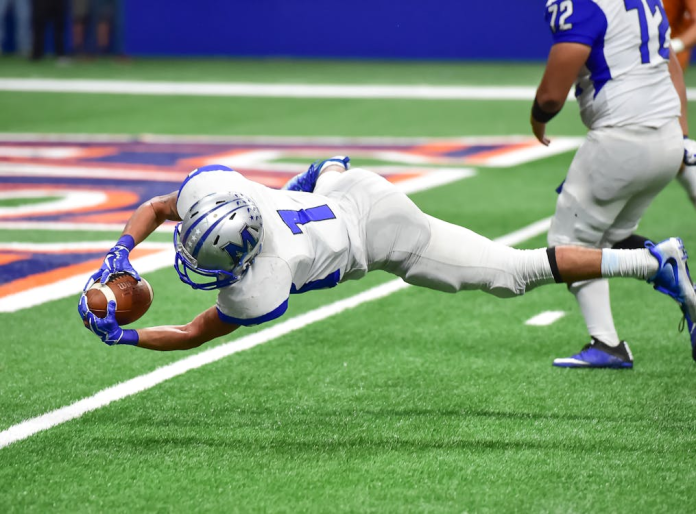For children and young adults, participating in sports can open avenues for opportunities and success. However, there is also the risk of injury, especially with contact sports.
Contact sports involve physical collisions, increasing the risk of serious injuries like concussions, fractures, and soft tissue damage. While it is impossible to completely mitigate the risk of injury, there are some measures you can take. Let’s dig into sports safety.
Table of Contents
Know Common Contact Sports Injuries
The first step is familiarizing yourself with common contact sports injuries. Whether you’re playing football, lacrosse, ice hockey, wrestling, or roller derby, here are some injuries you might suffer from:
- Sprains
- Fractures
- Strains
- Dislocations
- Contusions
- Concussions
- Nose injuries
- Back injuries
- Internal injuries
Knowing the symptoms and treatment time for various contact sports injuries can help you better prepare for any situation.
Wear the Right Protective Gear
The simplest thing you can do while playing contact sports is wear protective gear. For head and face protection, you should wear:
Helmets: A helmet can absorb impacts and protect your head from internal injuries and concussions.
Mouthguards: A sports mouthguard adds a protective layer to your upper teeth, preventing them from getting chipped, broken, fractured, or knocked out. Mouthguards can also prevent gum and ligament injuries. If you have dental work done, such as braces, wearing a mouthguard is even more important.
Depending on your choice of sport and potential injuries, you can get customized mouthguards. For example, if you play football, consider getting football mouthguards to ensure ultimate protection in the field.
Face Guards: They can protect your face and eyes from projectile or contact, which is common in sports like hockey.
Head Guards: They provide additional protection for the head and face, especially in sports like boxing and MMA.
Other examples of protective gear include:
- Shoulder pads
- Knee pads
- Elbow pads
- Groin guards
- Gloves
- Ankle brace
Warm-up Properly
To prevent injuries and enhance performance, make sure you warm up before stepping onto the field. The benefits of proper warm-up include:
- Better blood circulation
- Improved flexibility
- Loosened joints
- Increased endurance
- Mental preparation
Depending on your physical capacity and the nature of your contact sport, you can opt for various warm-up exercises. For light cardio, you can do jumping jacks, jogging, and brisk walking. Whereas, for dynamic stretching, you can focus on arm circles and torso twists.
For professional athletes, sport-specific drills are an amazing option. You can mimic the actions and movements in the sport and prepare physically and mentally.
Don’t Overplay
Overplaying refers to the excessive use of a specific body part, leading to injuries or worsening of a condition. Overplay injuries develop gradually over time due to increased stress without rest. In the beginning, the player might not notice any pain or discomfort. However, the symptoms can worsen in a short span of time.
One of the many severe consequences of overplaying in contact sports is long-term chronic pain, accompanied by swelling and inflammation. In some cases, you might be exposed to severe consequences, including tissue damage and stress fractures.
Here’s how you can prevent overplaying:
- Listen to your body. Know when to stop and rest.
- Ensure adequate training before stepping onto the field.
- Take frequent breaks.
- Use proper equipment.
- Stay hydrated before and during the game.
- Seek medical advice when necessary.
Familiarize yourself with the risks of overplaying to avoid unfortunate circumstances in the future.
Adopt Safe Playing Practices
Sports safety rules and guidelines are set in place to protect you. Every sport has specific strategies and techniques to keep players out of harm’s way. Always adhere to the rules so you don’t come crashing into someone else.
Adopting safe playing practices would not only prevent injuries but also allow you to continue participating in a sport you love longer.
Respond Promptly to Injuries
If you or someone on the field has been injured, responding promptly can save lives. Inform your coach right away and let them take action.
If possible, remove the bleeding or injured player from the ground and seek first aid. During tournaments or college training, there are sports physicians on board, which can help assess the situation. If further medical care is needed, you or the injured player will be transported to a facility.
Don’t Play While You’re Injured
Many players make the mistake of participating while they’re injured. The pressure to perform and maintain a “warrior mentality” can cause harm. Many players fear losing time or their status within the team, forcing them to push through pain. While there is nothing wrong with challenging yourself, knowingly putting yourself in harm’s way can be dangerous.
When you play while being injured, you risk exacerbating your condition. This can also lead to long-lasting consequences.
Stay honest with your coaches and the team about your injury. Let a medical professional assess your condition and follow their suggestions on when to return to the field.







